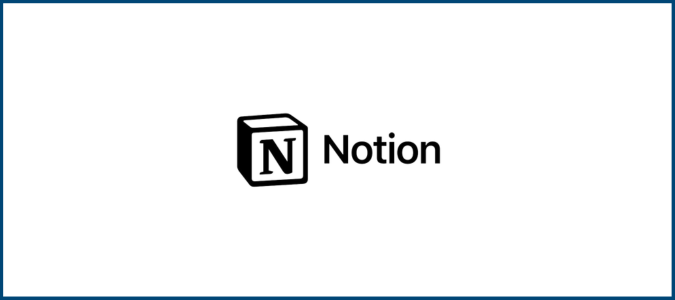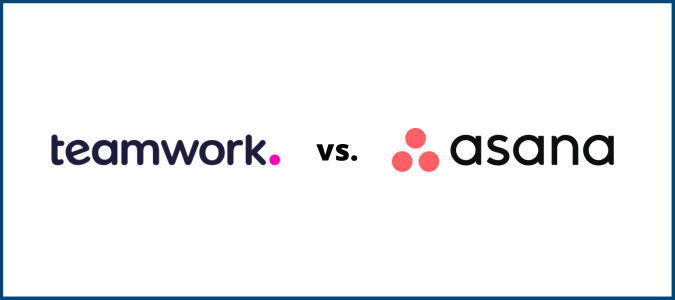In the project management world, waterfall is very straightforward and that’s why project managers love it.
It’s a linear project management approach where you gather stakeholder and customer requirements at the beginning of a project and then follow a sequential project plan to accommodate those requirements. That’s it!
Think of it as the OG of software development methodologies.
Sure, waterfall isn’t the most flexible, especially when compared to its modern counterparts like agile and Scrum, but that doesn’t mean it’s any less effective—provided you use it for the right projects.
In this guide, you’ll learn everything about waterfall project management and how you can use this methodology to improve your project results.
Excited?
Let’s get started!
Why Waterfall Project Management Is so Important
The waterfall project management strategy means everything is set from the beginning. Project requirements, stakeholder expectations, the overall structure… Everything!
Despite newly-invented project management methodologies, you’ll find several projects where waterfall is still the better fit, especially where teams know all the project requirements upfront.
In the words of Ben Aston from The Digital Project Manager, “Waterfall can be a useful and predictable approach if requirements are fixed, well documented, and clear, if the technology is understood and mature, the project is short, and if there is no additional value gain from ‘going agile.’”
Basically, teams still need waterfall for projects where agile is a complete non-starter.
Many people prefer this methodology because of its simple and linear design. Plus, a visual representation makes it easier for teams to understand the steps that must be completed to achieve project objectives.
A 2017 report from the Project Management Institute (PMI) found that 51% of organizations still used waterfall over other contemporary methodologies. So, it’s safe to say waterfall isn’t going anywhere anytime soon.
The following are a few more reasons why waterfall is still relevant today:
Straightforward Progress Measurements
Waterfall project management makes progress measuring simple and straightforward. Plus has clearly defined starting and endpoints. Every person involved is fully aware of the scope of work well in advance.
Simple Structuring
Why complicate something when it can be being easy, right?
Waterfall is more intuitive when compared to other project management methodologies. Every phase is in sequential order, with specific deliverables and a review process. As the whole approach is very methodical, it’s also easier for newcomers to follow.
Better Documentation and Clear Information Transfer
Every project benefits from clear documentation, making it easier for the members to follow progress. In fact, the waterfall is designed so that if any team member leaves suddenly during the development process, their replacement can easily pick up from exactly where the former left off.
Keeping these benefits in mind, you should also understand the kind of projects where the waterfall process is a better fit. These include situations where:
- Client requirements don’t change frequently.
- The projects are short and straightforward.
- The project phases don’t overlap.
- All requirements are clear and specified.
- The projects have a specific time framework.
- The development environment is stable, along with the necessary tools and techniques.
- All available resources are trained properly.
Additionally, waterfall was also more preferred where human life is on the line (where a system failure could result in deaths), and human safety is predominant. It’s easy to see why banking, healthcare, control systems for nuclear facilities, space shuttles, and so on use waterfall over agile.
The Department of Defense (DoD), military, and aircraft programs follow the waterfall model in many organizations because of the strict standards and requirements that have to be followed in these industries.
Here, the requirements are well-known in advance, and contracts are super specific about the project deliverables. The agencies also found waterfall to be more compatible with their acquisition process and rigorous oversight process, which is something required by the government.
How to Improve Waterfall Project Management Today
You can get the most out of waterfall project management by making key improvements. Waterfall boards are supposed to be clear, concise, and easy to follow — something that using project management tools like Monday.com makes possible.

Other than that, here are a few other tactics to ensure maximum results.
Match Project Nature With Methodology
Before deciding on a project methodology, make sure you choose the best option to accommodate the project’s nature.
Waterfall only makes sense when you’re following a linear process that doesn’t need much flexibility or many iterations. However, if you want something more fluid and unstructured or less structured, adopting agile project management would be a better bet.
A good tip is to study what other teams have used in the past for similar projects and then weigh your options depending on what needs to be done and how. You can also hold group discussions about different methodologies where team members and stakeholders can voice their opinions and discuss the nuances in more detail.
Nail The Documentation
Documentation is a vital aspect of the waterfall approach.
It’s the best way to highlight everyone’s responsibilities on the team, along with the deadlines for every task. It also creates an outline of the entire structure from start to finish, allowing others to see what steps need to be done to achieve the end result.
Create a solid project scope that defines project boundaries, and a central, documented plan of action to act as a point of reference. You can also make and post a visual progress meter (checking boxes, completing phases, etc.) to make it easier for team members to see and understand how their efforts help reach the end goal.
Think of it as adding a concrete element to what can feel like a far-off goal.
Create Realistic Timelines with Clear Due Dates
Waterfall teams should always define the times in phases at which client involvement is required.
Customers and clients are only involved at specific points in the project rather than having them at every stage. Moreover, if you don’t address assets and availability on time, it may ultimately delay the project.
Start by establishing clear deadlines for deliverables for both parties. Not only does it promote accountability among everyone, but it also gives them the initiative to deliver results on time by informing them of the requirements and deadlines.
Chalk Out the Various Criteria and Procedures for Every Phase
Action plans are always a great idea, especially for waterfall projects. Having clear-cut criteria and procedures for every phase of the project makes it easier for everyone to follow, monitor, and work collectively.
As such, there’s no fluctuation around criteria and procedures for the project, which, in turn, means fewer confusion opportunities and slowing down of progress. Plus, it’s easier to plan launch dates and make future-facing decisions due to simplified progress tracking.
Be on the Same Page as the Stakeholders
Large projects are notorious for going off the track. This is because of the ever-changing and never-ending opinions, requests, insights, tasks, and deadlines of different stakeholders, which ends up stretching deadlines and takes the project beyond the original scope.
It’s precisely why you should align expectations with the project’s stakeholders at the very beginning. Additionally, the stakeholders should understand not to push beyond what has been agreed at the beginning of the execution.
Waterfall, as a methodology, is designed to be rigid. Therefore, making changes in the middle of the project can be very difficult, which is why stakeholder requests should be minimal and all requirements are established from the very start.
Don’t Rush the Process and Always Test Deliverables
You should plan the project’s timeline in a way that leaves you with ample time to test the results.
It’s common for waterfall projects to be rushed as the deadline approaches, and while it’s not desirable, there isn’t much one can do about it other than improving the project’s planning and creating realistic due dates. You can also try to account for this rush during the planning stages while leaving enough time for testing and working out the kinks.
That said, don’t restrict testing to small sample sizes. You should collect meaningful data and get insights from valuable data sources as it’s the only way to get a clearer picture of the end product. Testing also allows you to make notes and discuss your findings as a collective with the team members.
3 Best Practices for Waterfall Project Management
Below, we’ve compiled a list of the top three waterfall project management best practices to understand what needs to be done to get the final deliverable.
Gather All Requirements and Documents in Advance
Before getting started on the project, you need all the documents and requirements clearly listed. Here’s how you go about it:
Project Scope. This is one of the most important documents for your project, and it should include your deliverables, features, deadlines, costs, and so on. This is incredibly important, so make sure you put in the necessary time and effort to get a clear and detailed project scope.
Stakeholder Expectations. We’ve already mentioned the importance of aligning expectations with stakeholders, a.k.a. the people who have a vested interest in the project. You can conduct interviews and hold meetings to get a clear idea about their vision and wants. It’ll work in favor of the project’s success.
Research. Carry out market research about competitors, current market trends, customer needs, and anything else you think can help contribute to your project’s success.
Create Teams. Next on your list should be to assemble all of the necessary people and resources, such as website developers, designers, programmers, and so on.
Structure Your Project Planning
Having a well-defined framework is a crucial part of waterfall projects. Planning the structure of your project means figuring out how to get to the end deliverable, which includes:
Collecting Tasks. Use a work breakdown structure to list all the necessary tasks that have to be done to get to the final deliverable.
Creating Schedules. Now that you have your tasks, the next step is to create a schedule to estimate the total time every task will take. After this, map them into a Gantt chart and link dependencies to get a clearer picture of the project. You can also add costs to build a project budget if you want.

Monitor and Track Project Progress Regularly
At this point, you should be in the implementation stage of your project, where you build and test the deliverables. Here’s how you can monitor and track progress easily:
Assign Team Tasks. Project members should be responsible for their respective tasks. Again, you can prepare these tasks from a Gantt chart and add priorities, descriptions, and so on to make the process even more defined.
Monitor and Track Tasks. Once project execution starts, you should monitor and track daily progress to ensure the project moves as per schedule.
Manage Resources and Workload. It’s common to face obstacles when implementing a project. You’ll find yourself reallocating resources and balancing workload a lot, but it’s also a necessary step to avoid bottlenecks.
Report to Stakeholders. Stakeholders should always be kept in the loop during the course of a project. It’s your responsibility to keep updating them to show progress. You can also meet them and discuss a regular schedule for presentations, keeping it convenient for both parties.
Test and Deliver Deliverables. You must test the deliverables extensively to ensure everything is working as designed. Only after rectifying errors and working out issues should you deliver the deliverable to the stakeholders.















